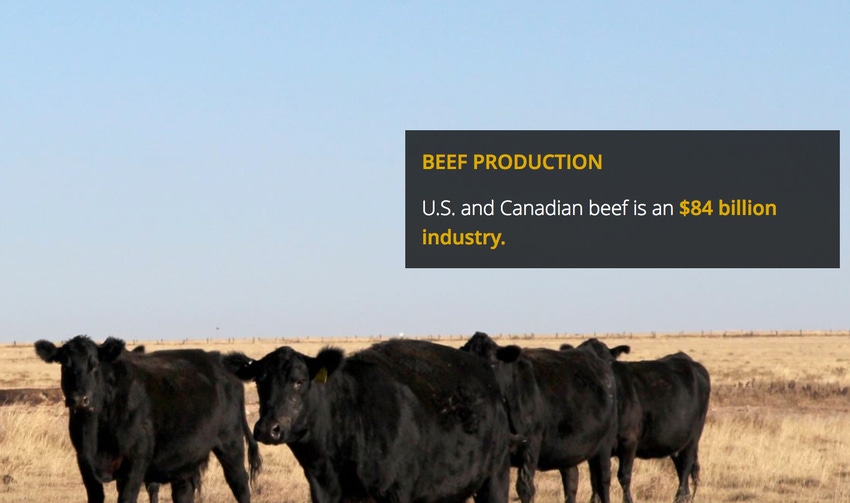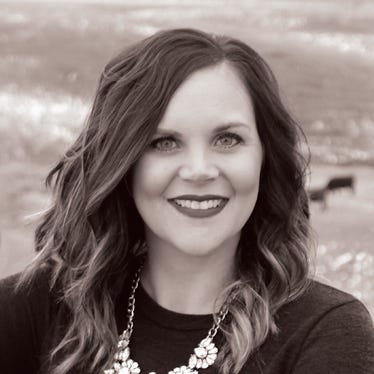Check out Cargill’s new interactive beef guide
Want a one-stop spot to share accurate and relevant information about beef production with consumers? Check out Cargill Protein’s new online story map, “Raising Beef to Higher Standards.”
May 14, 2018

I recently had a conversation with consumers in an online forum about what cattle eat, how long they spend on grass and the merits of different production methods. I spent a lot of time sharing pictures of the various feedstuffs our cattle eat, as well as explaining how our cow-calf operation is just the start of a longer beef production chain, where each step plays an integral role in getting healthy and delicious beef to the dinner table.
Ultimately, it was a great conversation, and it’s always a good feeling to receive positive feedback from consumers. Being transparent by sharing photos from our ranch alleviated some of their concerns, particularly when I reminded them that our operation wasn’t an exception to the rule, but these management and feeding tools are largely implemented by most cattle producers across the country.
READ: A world without beef is just not sustainable
Looking back on the thread, I wish I had Cargill’s new interactive online story map titled, “Raising Beef to Higher Standards,” to share with the online group.
Released just in time for National Beef Month, Cargill Protein launched this educational beef guide to help explain how beef is produced in the United States and Canada.
A tour of the map tells the stories of ranchers, stockers, feedlot operators and packing plants.
The guide is filled with interesting tidbits, and even though I’ve been involved in the cattle business my entire life, I took away several new facts that I didn’t know.
VIEW: Photos highlight quiet moments on the ranch
Here are a few highlights that consumers can learn as they explore this interactive learning guide:
- In the U.S., 91% of beef cattle operations are family or individually operated, and 11% are operated by women.
- The average herd size in the U.S. is 40 head; 90% of herds have fewer than 100 head. Viewers can then explore a map of the U.S. and Canada to see where the majority of cattle live, and they even have the ability to click on various counties to see how large the beef herds are in different areas. For example, I live in Davison County in South Dakota, and it’s home to 10,036 head of cattle.
-Viewers are also invited to tour three cattle ranches featuring aerial views of their locations and learn more about their stories and fast facts about their businesses.
- Another map shows where cattle on feed are located across the country and describes how 80% of U.S. cattle feedyards are family or individually operated.
- A pie chart reveals that throughout their lifetimes, cattle eat 35% fresh grass, 3% wet distillers, oilseed meals and bran, 15% grains, 8% silage and 39% hay.
- In the feedlot section, viewers can tour feeder operations, again with an aerial map showing what these businesses look like, with quotes from the owners themselves.
- Consumers curious about packing plants can explore the Cargill locations across the country.
- Viewers can also learn how wildlife interact and live cohesively with grazing cattle, as well as other tidbits of information such as how cowhides are used to make baseballs and other by-products.
- Cargill also shares its commitment to reducing its greenhouse gas emissions by 10% by 2025 by focusing on key areas including feed production, manure management, enteric fermentation, energy use and post-farm transport/processing and water use.
READ: 11 must-read profitability tips from Burke Teichert
I really enjoyed browsing through this interactive guide, and I think producers and consumers alike will find it valuable.
View the interactive story guide here and let me know what you think.
Be sure to share this blog post on social media today to help spread the word about this guide. Thanks for your help!
The opinions of Amanda Radke are not necessarily those of beefmagazine.com or Farm Progress.
About the Author(s)
You May Also Like




.png?width=300&auto=webp&quality=80&disable=upscale)
